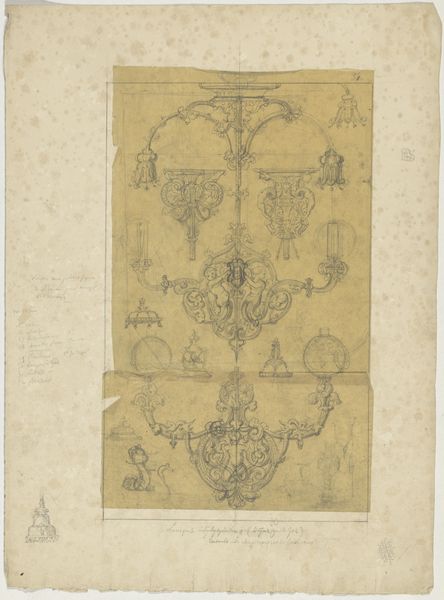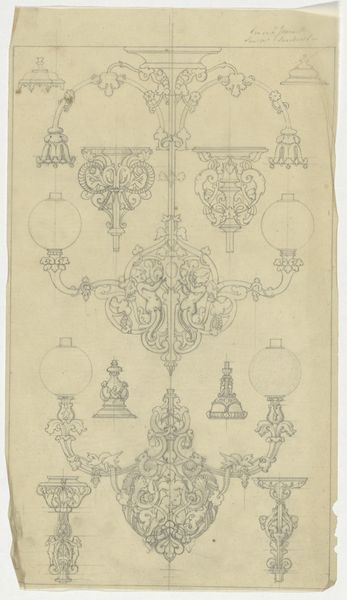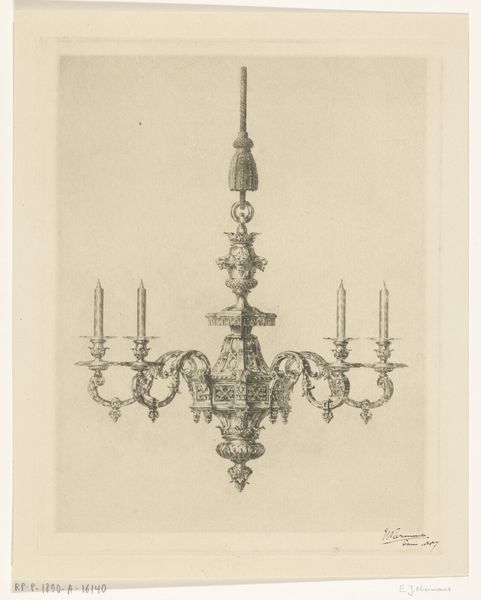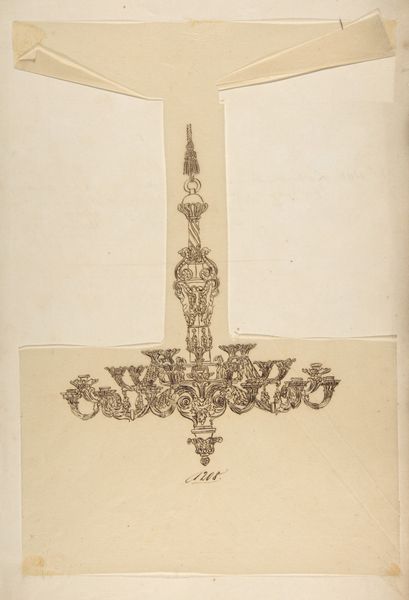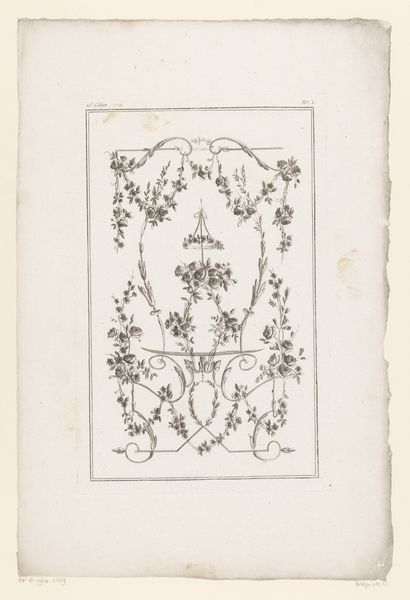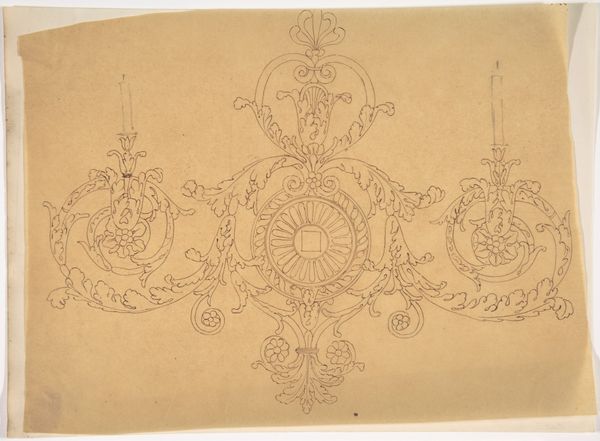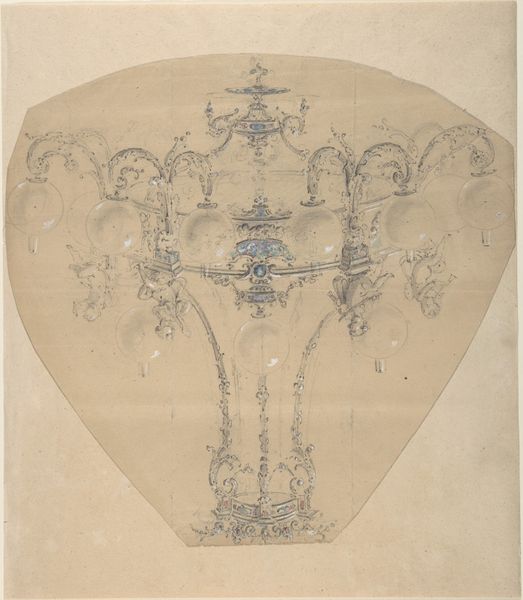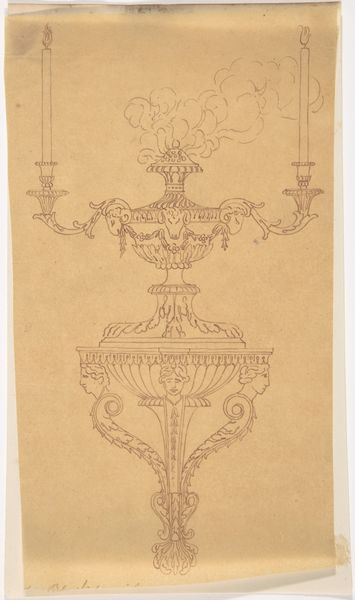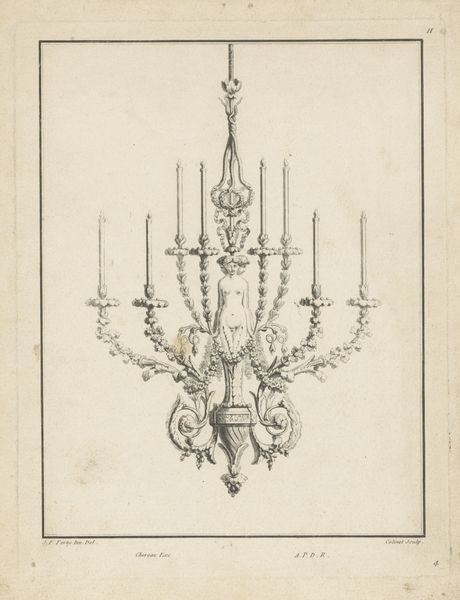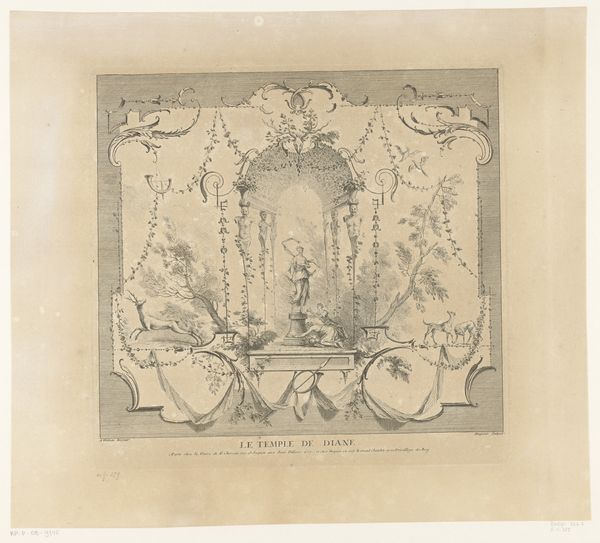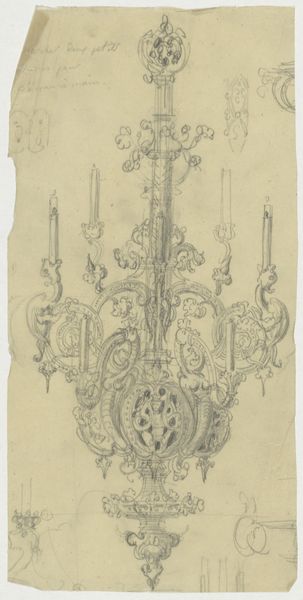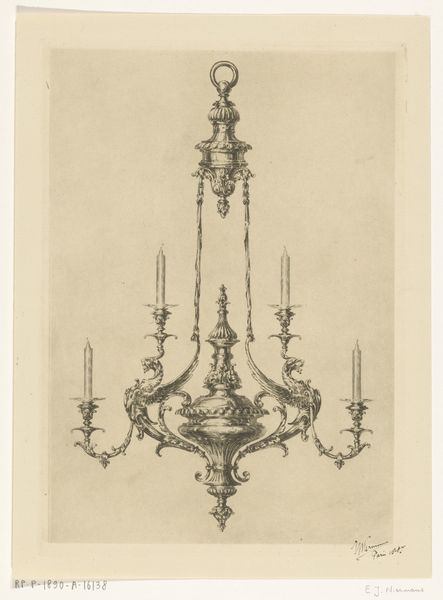
drawing, print, ink, pen
#
drawing
# print
#
pen sketch
#
form
#
ink
#
geometric
#
pen-ink sketch
#
pen
#
decorative-art
Dimensions: sheet: 15 15/16 x 15 3/8 in. (40.5 x 39.1 cm)
Copyright: Public Domain
Curator: This ink drawing from the 19th century, residing at the Metropolitan Museum of Art, is titled "Design for a Chandelier" and attributed to an anonymous artist. What strikes you most about this intricate design? Editor: An interesting piece, I immediately note the stark contrast; something about the ethereal weightlessness against the potential societal weight of decorative objects like chandeliers. Is it intended for a palace or a bourgeois salon? Curator: That is fascinating to consider. Speaking purely of form, the geometric shapes are softened by the ornate, almost organic embellishments. The lines, created using pen and ink, possess a delicacy despite the object's intended grandeur. What do you make of this duality? Editor: I would argue that the "grandeur" isn't inherent but socially constructed. Who would commission such a piece? The drawing offers little in perspective about the identity and privilege linked to opulent lighting and casts no shadows on where the artist may fit in. Curator: Ah, so you are situating the drawing within a narrative of socioeconomic disparity? To push back for a moment, the drawing itself—independent of social context—functions beautifully as a study in symmetry and asymmetry. Notice how the artist employs both geometric repetition and flourishes of chaotic detail? Editor: But can we truly separate art from its environment? If an artwork embodies a certain aspiration, let's say societal elevation through the accrual of wealth, ignoring the inherent issues seems negligent. Think of who toiled to make this vision possible; how do we honor their unseen presence? Curator: Fair enough. And in the tension between celebrating the design and questioning the structure of labor exists perhaps an unresolvable paradox, mirroring our relationship to aesthetic beauty, social issues, and labor histories. Thank you, that has been truly thought-provoking. Editor: And to you; illuminating hidden corners and fostering a broader discussion is why we analyze objects, not merely admire them.
Comments
No comments
Be the first to comment and join the conversation on the ultimate creative platform.
